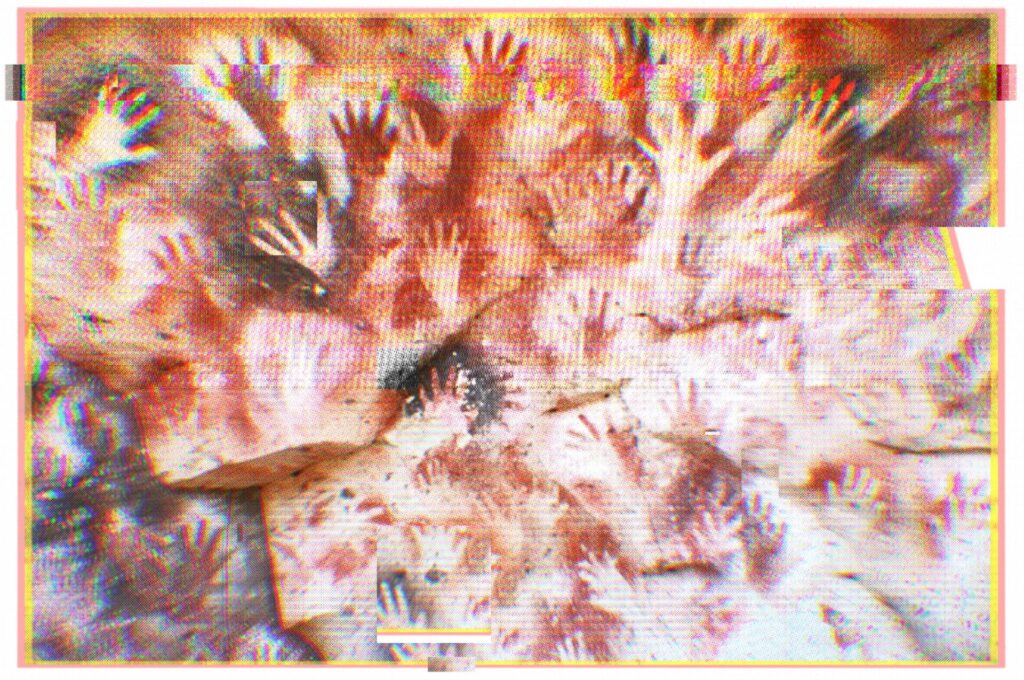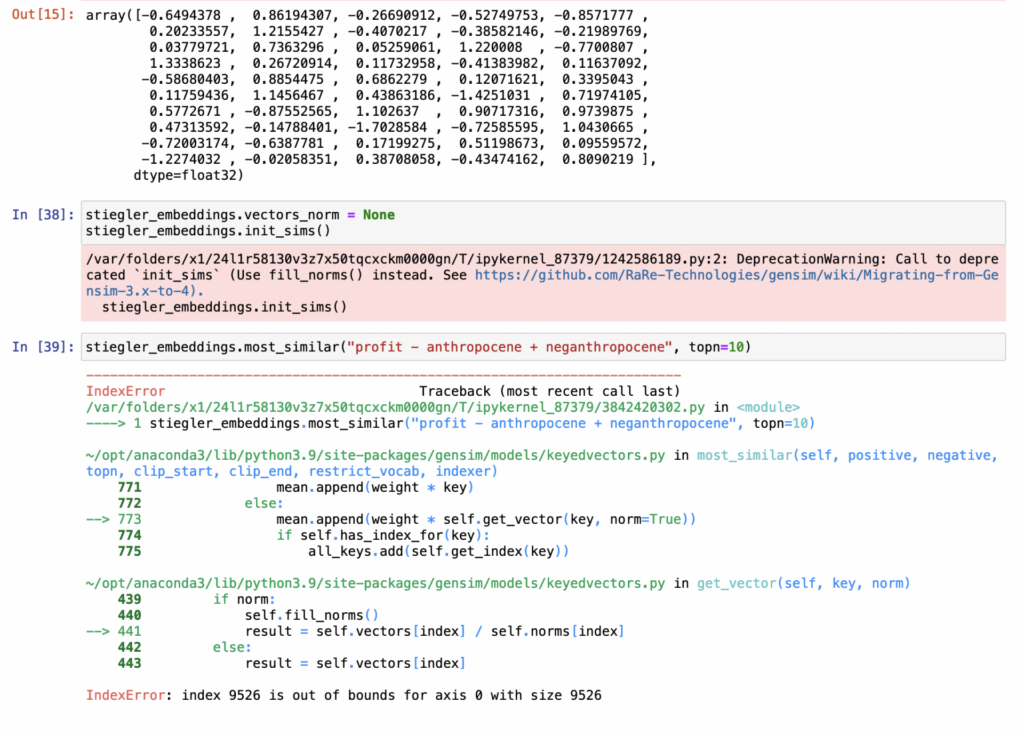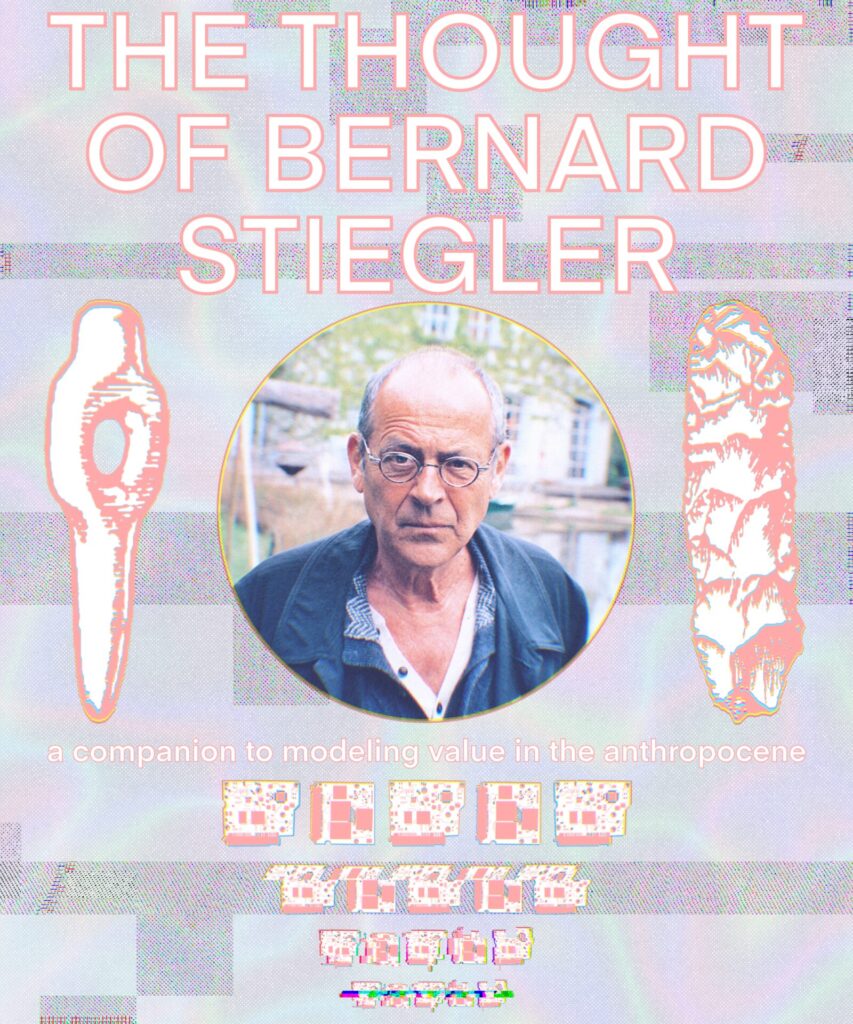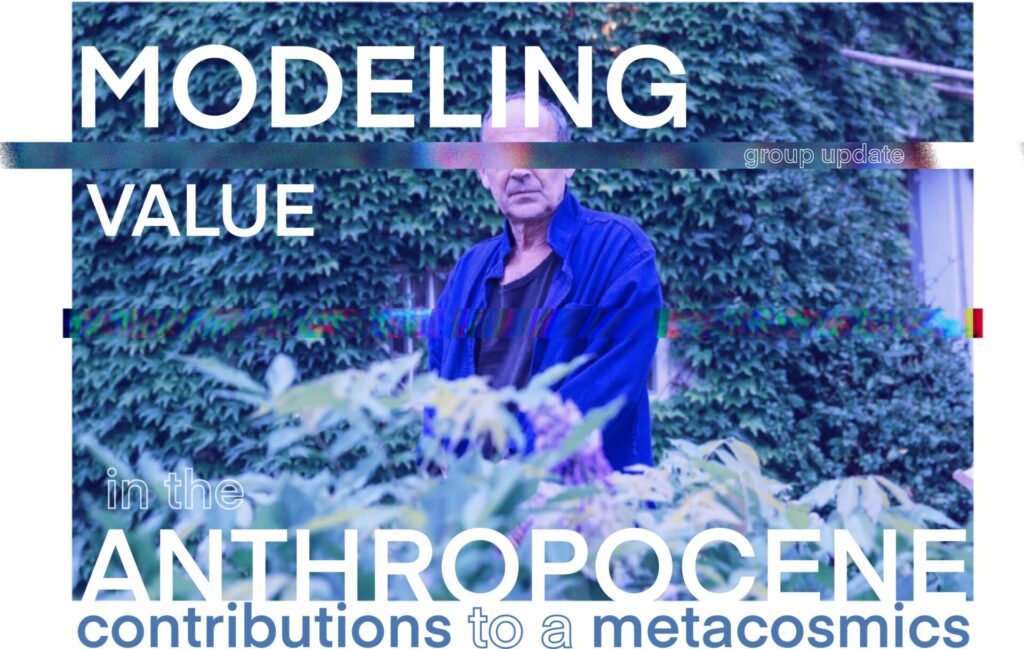
This week, the theoretical foundations we’ve tilled throughout the semester and the sprouts of code that we’ve been working to steadily nurture have at last hit a growth spurt – a welcomed sight considering season’s harvest is fast approaching us. Brian, Modeling Value in the Anthropocene’s preeminent vector producer, has worked diligently to develop our code, surmounting the entropy of depreciation and navigating a sequence of potentially-progress-preventing errors. Most recently, in coordination with the GC’s resident Python wizard, Rafa, we’ve managed to tackle a malevolent IndexError, seen below, through a simple excision of futile functions silently lingering within the complexities of our cipher. As far as we can tell, the sailing is smooth from here on out. As is likely evident at this point, writing about coding is a difficult thing to do so, while I apologize for the brief nature of this update, rest assured that value is being modeled in an anthropical manner.

Extending our sphere of mentors to include Rafa has proved to be wildly helpful, as we were provided with additional workshops to assist us through the last leg of our Pythonic journey along with the necessary troubleshooting to overcome our now-disentangled block of code. Despite Rafa’s incredible demanding schedule, presently saturated due to his role as an advisor for the Digital Humanities program, he managed to find time to enthusiastically assess our code, bypass the hindrance that had held up our progress, and provide valuable guidance for the next steps of our modeling of value in the Anthropocene. As we noted in our presentation, if we’ve learned anything from the process of developing this project, it’s been the strength of the support systems available at the GC and the talented folks that populate them.
Over spring break, Brian and I intend on developing our code to some stage of “near-completion” (with the tentative assistance of Leanne on Monday) so that we might finally have a concrete sense of the shape that our final findings might take in order to begin developing elements of the project that are determinant on these results.
In the meantime, our previous group updates have started to be accumulated and restructured into a “blog” of sorts, in order to detail our processes, our difficulties, and our victories for those who seek to work on similar text analysis projects in the future. Additionally, the creation of our digital “Introduction to Bernard Stiegler” document that will detail Stiegler’s thought in an approachable fashion is underway, with both the script and images being constructed and compiled behind the scenes. I’ve attached a few provisional mock-ups that represent the aesthetic direction this production might take.

And lastly, as we’ve noted previously, our Modeling Memory in the Anthropocene project for our Digital Memories class has been approved with production at last set in motion, providing an exciting additional element to our exploration of Stiegler’s work that we look forward to incorporating into Modeling Value in the Anthropocene.
Alright, folks, that’s all from us. We hope everyone has a happy and safe Spring Break and we look forward to seeing everyone’s project flourish in this delightful spring air.
Be well,
H & B





